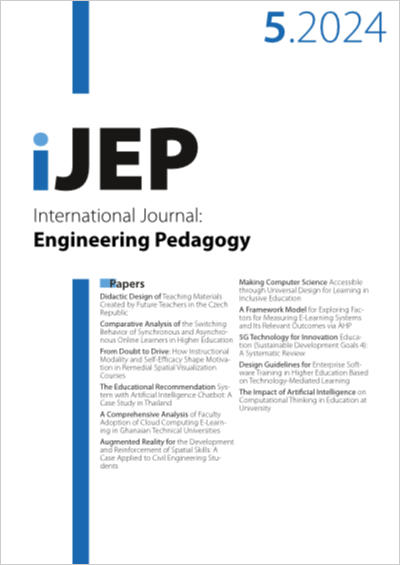From Doubt to Drive: How Instructional Modality and Self-Efficacy Shape Motivation in Remedial Spatial Visualization Courses
DOI:
https://doi.org/10.3991/ijep.v14i5.46097Keywords:
spatial training, remedial courses, self-efficacy, student motivation, instructional modalityAbstract
Spatial thinking is the foundation for successful problem-solving and critical thinking. Scholars have confirmed that spatial skills are essential tools for problem solving in fields such as engineering, design, physics, and mathematics. Drawing on Bandura’s self-efficacy theory, this study investigates the impact of instructional modality, self-efficacy, and attitudes toward a spatial visualization app on student motivation in the context of an engineering remedial spatial visualization course. Our study focused on undergraduate engineering students from two cohorts with different instructional modalities, one in 2019 and the other in 2020. This study employs a quantitative approach, gathering data through questionnaires to measure student motivation, self-efficacy, attitudes toward the app, computer-aided design (CAD) experience, gender, and instructional modality. Our findings indicate that instructional modality significantly influenced student motivation, with online instruction during the pandemic being associated with lower motivation. Furthermore, significant predictors of student motivation were identified as self-efficacy and attitudes towards the app, independent of instructional modality. The findings provide insights into strategies for educators to implement educational technology in their courses while also remaining committed to nurturing student self-efficacy in online and in-person learning.
Downloads
Published
How to Cite
Issue
Section
License
Copyright (c) 2024 Beyza Nur Guler, Susan Sajadi, Diana Bairaktatova , Abdulaziz Alenezi

This work is licensed under a Creative Commons Attribution 4.0 International License.



